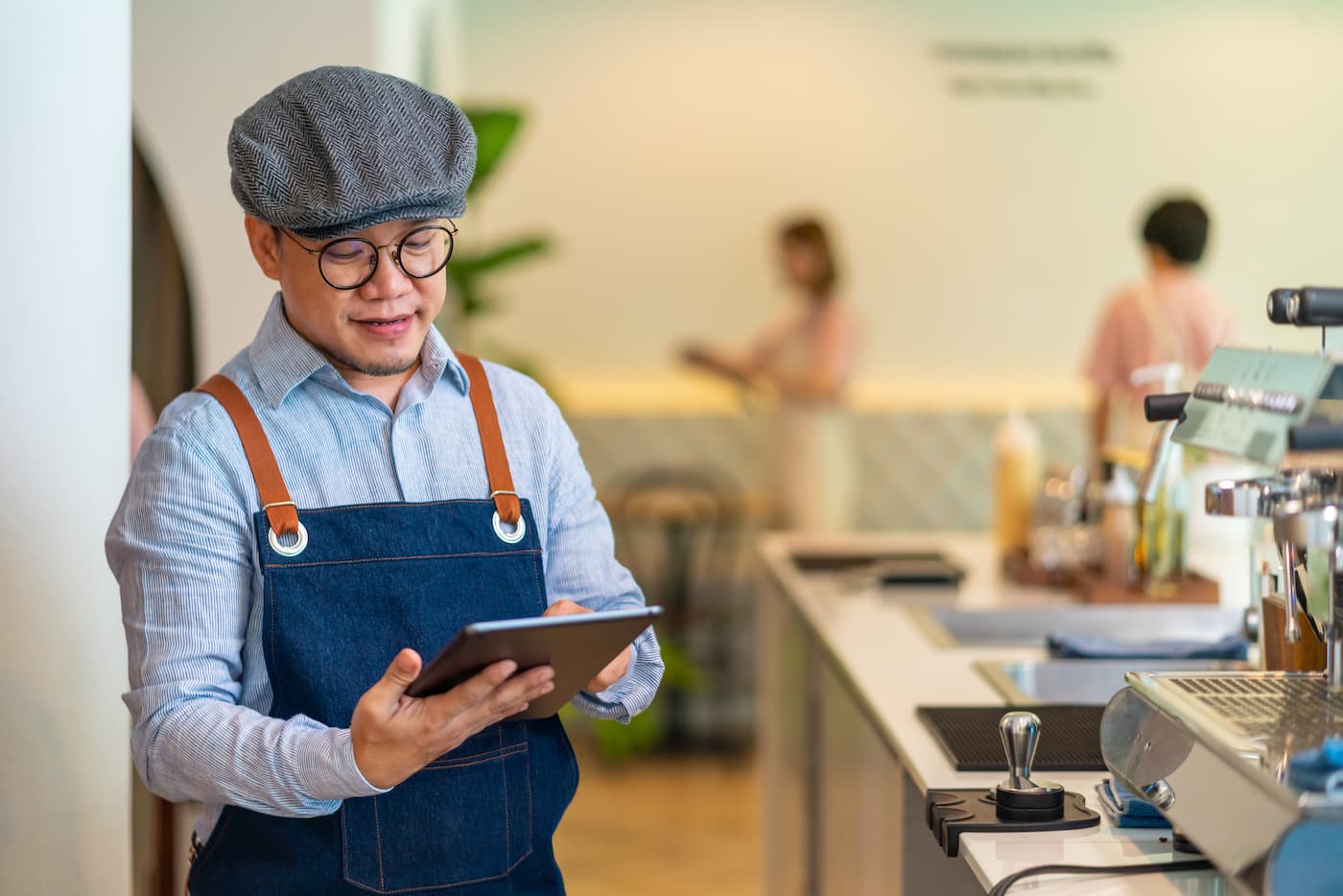9 must-know consumer trends for 2024
Editorial Team
7 min read
Anticipating tomorrow’s shopping trends can help today’s businesses refine product lines, hone marketing plans, and edge out the competition. These consumer trends are making a big splash in the market and are on track to have an even bigger impact in 2024.
Restaurant owners, retailers, and service providers alike can use these 2024 trend predictions to get organized for the months to come.
Consumer shopping trends for retailers
Retailers are among those likely to be most impacted by wavering consumer confidence in 2024. Forrester predicts that trust for both established and new businesses will decline by 10% in 2024. Retailers should consider how these consumer expectations could impact buying trends.
1. Easy, fast payments are a must
Contactless payments rose in popularity during the pandemic, and are now one of the preferred ways to pay for many consumers. In fact, almost half of the US population– –about 150 million Americans–have used mobile wallet payments at least once. What’s more, contactless consumer spend is expected to double by 2026. Contactless payment systems like Clover allow shoppers to complete a transaction using a debit card, credit card, or mobile wallet without physically swiping or inserting a card into a point-of-sale device, handing a card to staff, signing their names, or entering PINs. For your store, contactless can offer everything from faster checkouts to greater customer satisfaction to more convenience. If you don’t accept contactless payments in 2024, adding this could be a great way to help meet your customers’ expectations.
2. Consumers love “social commerce”
Social commerce involves selling products or services directly through social media platforms–and it’s one of the hottest buying trends of 2024. Instagram, Pinterest, Facebook, and TikTok all offer built-in social commerce tools that make it easy for consumers to browse and check out.
On the seller side, social commerce conversion rates are promising, especially since buyer intent is high on social media: 81% of shoppers use Instagram and Facebook to research products, and shopping is a top priority for 48% of Pinterest users. Capitalize on this high intent by setting up a social commerce store and integrating it with your POS system.
3. Be available everywhere, all at once
Consumers expect their retail experience to feel seamless, no matter where they shop. Yet, while 75% of consumers want a seamless omnichannel experience, only 25% are satisfied with the experience that retailers provide. Put simply: consumers want to shop everywhere and all at once.
Clover’s reporting tools can help merchants optimize their omnichannel approach. Clover reporting unifies data across all sales channels—including a POS system, website, and social media platforms— into a single view, giving the seller a holistic understanding of sales performance across all channels. This information can be used to make informed decisions about where to allocate marketing resources and how to improve a retailer’s omnichannel strategy.
2024 consumer trends for food & beverage industry
Retailers aren’t the only ones dealing with low consumer confidence. In the hospitality industry, diners aren’t just looking for a great meal—they’re also looking for a great deal. Bank of America expects to see consumers trending toward cost-conscious dining choices, either by opting for casual restaurants instead of fine dining, skipping courses to lower their bills, or by switching from dine-in to take-out. Here are three ways restaurant owners can respond.
4. Create exclusive offers
Consumers want to have their cake and eat it too (pun intended). They want to dine out, but they also want to minimize the impact to their wallets.
Restaurants can address this by focusing on value. “[That] does not mean discounting but rather bringing back limited-time offers and making sure to have items that attract deal-seeking consumers while also encouraging trade-ups with ‘craveable’ offerings,” said Cristin O’Hara, managing director of Bank of America Global Commercial Banking’s Restaurant Group.
One way to introduce limited-time offers is through Clover’s loyalty tools. Clover Rewards, part of the Clover Customer Engagement suite, lets you create unique loyalty programs that enable customers to earn perks. The program is designed to help boost customer retention and incentivize more frequent visits.
5. Self-order kiosks give diners what they want
Self-order kiosks are popping up in fast-food restaurants all over the country, and we expect to see more of them in 2024. They typically offer user-friendly menus that make it convenient and easy for consumers to place their orders–and a more relaxed, controlled experience than traditional ordering methods.
It’s easier than ever to integrate kiosks into the dining experience with tools like Samsung Kiosk and Clover. Clover devices like the Solo and Duo can be configured to work with the Samsung Kiosk to take orders, capture customer reviews, and let diners customize their orders. For restaurant owners, self-orders can mean reduced front-of-house staffing costs, more upsell opportunities, fewer order errors, and faster order fulfillment.
6. Scannable experiences with QR codes
QR codes are already widely used overseas, and US consumers are catching on. Like contactless for retailers, QR codes can make ordering fast, easy, and convenient for restaurant fans. Some restaurant owners even use them to solicit reviews, share stories about their ingredients, and accept online orders.
And they’re easy for diners. With Clover’s Scan to Order, diners just scan a QR code that contains the menu and table information. They can then initiate contactless ordering directly from the QR code menu on their mobile devices and enjoy their meal. Diners can finish off by using a Clover-generated QR code at the bottom of their receipt to pay their restaurant bill with a credit card, Apple Pay®, or Google Pay™.
2024 consumer trends for personal and professional services
2024 promises to be about working smarter–not harder–for professional and personal service providers. Finding ways to automate, lower risk, and offer self-service options for customers, can help you save time and provide five-star service to your clients.
7. Automate as much as possible
There is a plethora of tools on the market built to speed up the mundane tasks that quickly eat into a professional’s day. Clover invoicing, for instance, streamlines the process of preparing, sending, and tracking client invoices so you get paid via credit card and receive your money faster. Or, the Time Clock by Homebase integration for Clover’s line of POS devices takes on the work of employee scheduling, payroll, and management.
8. Streamline appointment booking
Businesses that don’t offer a way to book appointments online or via app are missing out on potential new clients. Nearly 70% of customers are more likely to book with a company that has an online booking system, according to data from BookingLive. In Clover’s App Market, you’ll find tools that allow clients to book their personal services online: try Salon Scheduler or Cojilio Booking Platform.
9. Secure your client data
Small businesses are frequently targeted by online criminals–often because smaller merchants have more lax security protocols. Unfortunately, customers may not stick around if you experience a data breach. According to Salesforce, “78% of customers say they would switch financial service providers if they felt their data was mishandled.” Consider working with a cybersecurity professional to safeguard your data.
On the payment side, Clover’s payment processing offers end-to-end encryption and tokenization technology on a PCI‑certified system.
Stay on top of 2024 consumer trends with Clover
Make 2024 your best year yet by anticipating consumer trends and streamlining operations. Clover offers devices, tools, and lots of third-party apps designed to help. Contact a Clover Business Consultant to learn more or get started.
Related Posts
10 easy-to-use August strategies to improve your productivity all year
What is a card-not-present (CNP) transaction?
Popular Topics
Stay in touch
Sign up and learn more about Clover.
Thank you for your subscription!
More posts about starting a small business
eBook





